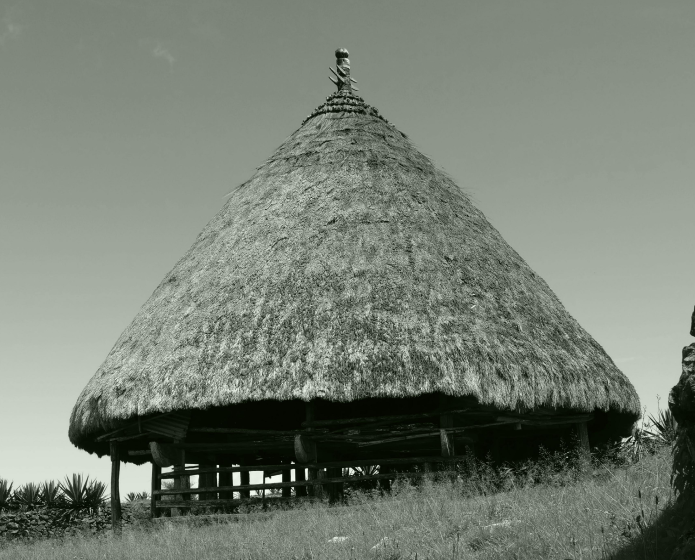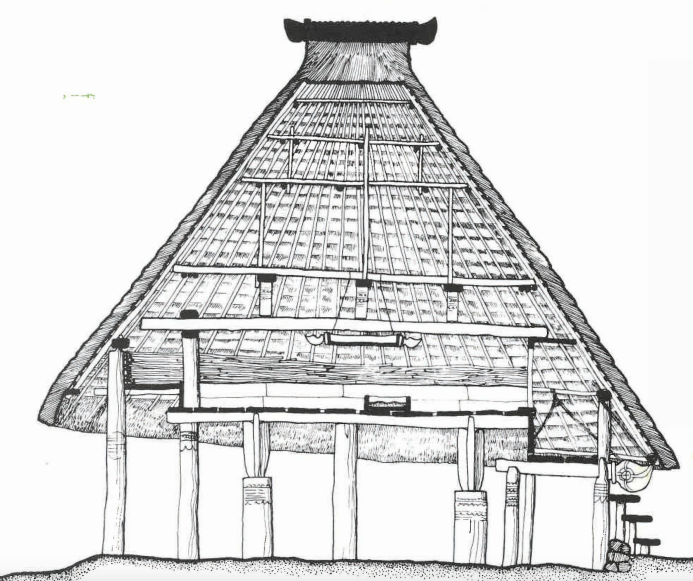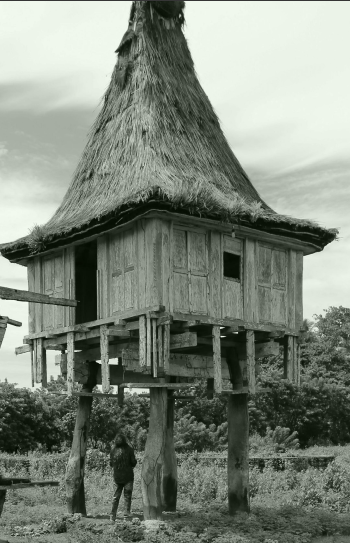Construction practices#
Timor Leste#
The characteristics and distribution of the building portfolio in Timor Leste is strongely connected to its recent history. Traditionally, buildings in Timor were made with vegetable materials (timber, bamboo, grass and vegetable fibers), as seen in the images below (Braz et al, 2011). Its architecture results from the climate adaptation, with very inclined roofs to drain water from heavy rainstorms, big openings and high ceilings to promote ventilation.



During the Indonesian occupation period (1975-1999), the use of concrete was introduced in Timor, which resulted in the construction of many reinforced concrete of dwellings in general with low quality. Following the 1999 East Timorese crisis, around one third of the buildings in the country were destroyed and the forest devastated, making timber a scarce material.
The political and economic instability in the country in the following years, together with the need to rebuild an important percentage of the houses in the country, led to the construction of many low quality dwellings across the country, which were built by its owners. According to a survey carried out in the capital, Dili (Moita, 2009), 62% of the interviewed built their own houses, 8% had some assistance in the construction and only 24% used specialized workforce to build their houses. The construction uses mainly poor materials and unspecialized tools. 84% of the responders refused to use traditional materials in Dili due to the need of higher maintenance, lower duration, and because traditional materials are more difficult to find in the capital and therefore more expensive. Around 64% of the surveyed houses were built with concrete blocks, 26% with a mixture of concrete blocks up to 1m heigh and “piku” (vegetable material) in the remaining 2m, and 10% are exclusively built with “piku”. Also, 96% of the constructions use zinc as the roof material.
The rural population in Timor (around 70%, according to the 2015 Census) lives mostly in hybrid houses, with a structure made of wood and wood-concrete mixtures, bamboo and “palala” walls with zinc plates for roofs (Braz et al, 2011).
Overall, in the country, the majority of dwellings use traditional wall building materials (bamboo, wood, corrugated iron, clay and palm trunks): 62% as opposed to 38% of bricks and concrete dwellings, according to the “Analytical Report on Housing Characteristics and Amenities”. The same study confirms that the majority of dwellings in rural areas are constructed using traditional materials, while most dwellings in urban areas are made of bricks/concrete.
References#
“Analytical Report on Housing Chjaracteristics and Amenities”, National Institute Of Statistics Timor-Leste (https://inetl-ip.gov.tl)
Braz S, Silva G, Corria Guedes M (2011) “Low cost sustainable building solutions for East Timor”, 27th Conference on Passive and Low Energy Architecture, Belgium
Tenorio R, Costa Junior J (2020) “Traditional architecture in Timor-Leste 70 years after Ruy Cinatti’s Expeditions”, Published by the University of Western Australia https://issuu.com/uwaschoolofdesign/docs/timor_catalogue
Moita M (2009) “Construção para o desenvolvimento. Sobre a elaboração do Manual de Boas Práticas de Construção para Díli, Timor-Leste” Master Thesis, Instituto Superior de Ciências do Trablaho e da Empresa, Lisbon, Portugal